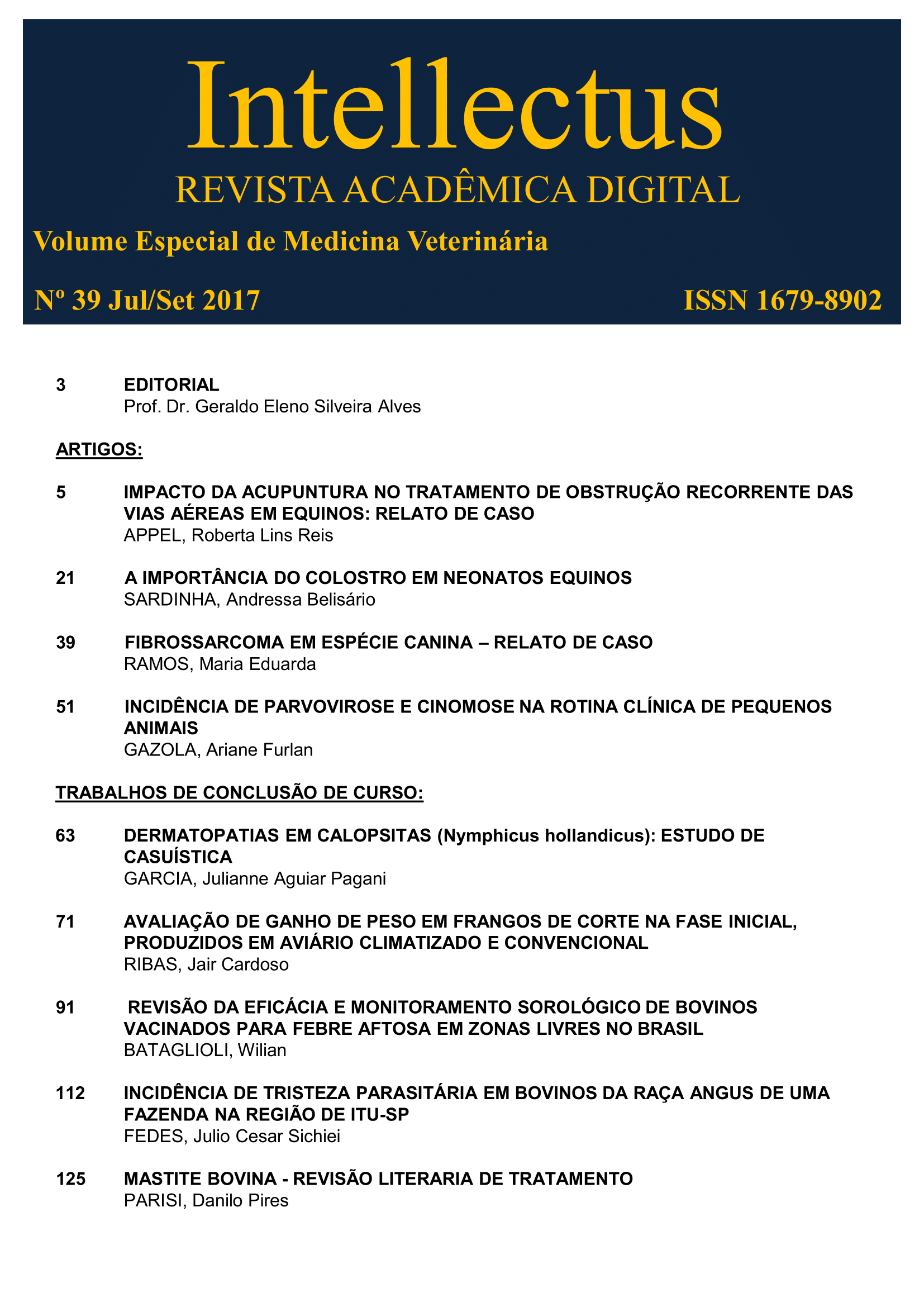Antimicrobial resistance to enrofloxacin in canine cystitis
Evaluation of 430 cases between 2013 and 2016
Keywords:
resistance, enrofloxacin, cystitisAbstract
This study aims at assessing the bacterial prevalence in cases of canine cystitis, as well as the rate of antimicrobial susceptibility and enrofloxacin resistance. Four hundred and thirty (430) cases have been scrutinized through urine culture and antimicrobial susceptibility test in two pathology laboratories in Campinas/SP, between 2013 and 2016. The most frequent isolates were Escherichia coli, Staphylococcus spp, Proteus spp, Streptococcus spp, Enterococcus spp, Klebsiella spp, Pseudomonas spp, Enterobacter spp, Serratia spp e Hafnia alvei. The rate of enrofloxacin resistance was 45%, mainly on account of Staphylococcus spp(p<0,003/67,68%), Escherichia coli(p<0,03/37,20%), and Proteus spp. (p<0,006/34,72%). Animals above eight years old were mostly affected by cystitis (p<0,007). It has been proved that the disease was more prevalent among female dogs (p<0,002); rates of resistance were more significant among male dogs, though (p<0,02). It is conclusive that indiscriminate and excessive use of antibiotics is one of the major causes of antimicrobial resistance, besides a multidisciplinary Public Health challenge.



